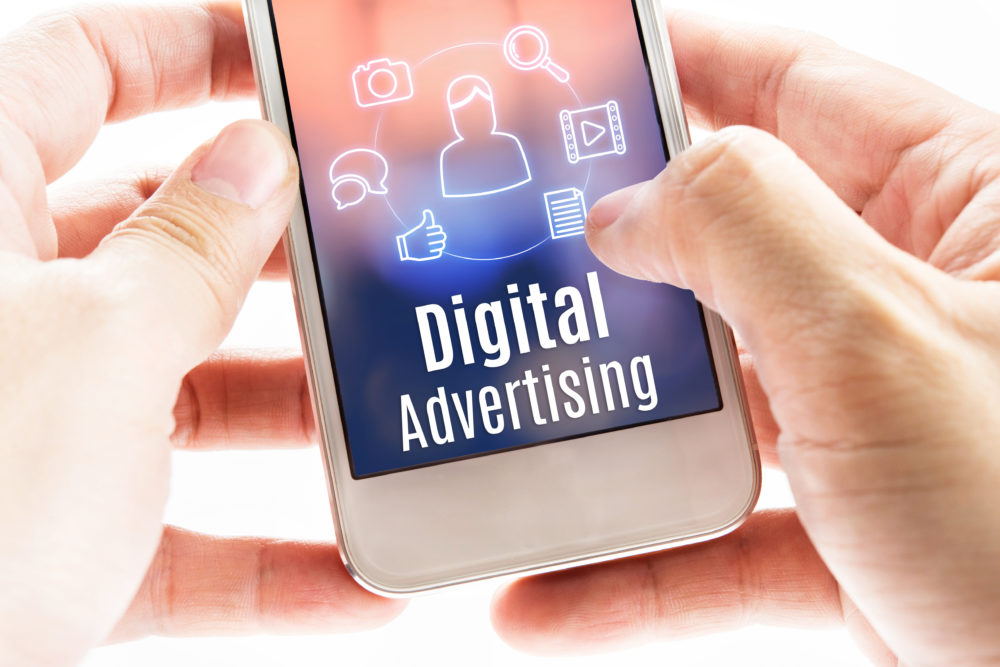Digital marketing channels are often believed to be the best among many of today’s industries, as it’s proven they have a high reach and can be used to demonstrate enhanced customer engagement.
The ‘death’ of traditional marketing has been predicted since 1994, so it might come as a shock that – as a channel – print still provides just as much effectiveness as digital advertising.
Tim Fuller, managing director of Discount Displays discusses why businesses should not neglect traditional methods and why digital marketing won’t completely take over.
Legislation consideration
GDPR came into play in May this year and although many view it as a burden which significantly limited the number of leads for business, it presents lots of opportunities too.
It has had an impact, particularly on digital marketing methods. For businesses to use consumers’ data they now have to obtain firm permission, it is no longer acceptable to gain a ‘soft opt-in’ or ‘implied consent’.
So how does GDPR affect more traditional marketing methods? It seems GDPR doesn’t have as much of an impact on these processes as it does for more tailored digital channels.
In fact, more traditional advertising in magazines and newspapers could even benefit from the change in regulations, as traditional media doesn’t require people to opt in to ads.
For example; under PECR, postal marketing is exempt from the changes in GDPR, if businesses include a contact method for consumers to opt out and put clear processes in place for opt in, data processing and audit purposes.
If brands are cut off from reaching target audiences with unsolicited messages online, they may pay more attention to advertising methods which, though they don’t require permission, still have some ability to remain targeted.
Simply the best
Why is traditional still popular? The simple answer is most marketers understand it. You produce an advert, pick the publication you want to run it in and hey presto, there’s an advertisement.
You know the average readership and the demographics. It’s also easier for reaching your target local audience too. For example, a radio ad might play in one location: your city or region. Or flyers will go to households in a select number of areas.
Mailed advertisements and catalogues have shown remarkable resilience and according to Nielsen Scarborough’s USA+ database, 15 per cent of its respondents have made up to three purchases from a mail order catalogue in the past year.
Neuroscience seems to support the benefits of hard copy marketing too. A study sponsored by Canada Post compared the effects of paper marketing with digital media.
According to the report, direct mail was easier to process mentally and tested better for brand recall.
Flip the channel to digital, and it gets a whole lot more complex. While it’s true it’s easier to target an international audience and tailor ads more effectively, the process can be more complex and time-consuming.
What type of digital ad are we placing? Will it be a banner ad, search, mobile? Will it interact with the user? Where will the ad take the user and what is the experience post-click? The list of questions goes on.
See also: The essential guide to small business marketing
Subtle is the key
Have you ever considered the amount of advertising your unconscious notices daily? Although you will see many digital adverts on your computer, laptop and other mobile devices, you may not realise how many of the less obvious adverts you take in and pass by every day.
It has been found the average London commuter sees 130 adverts during a 45-minute journey to work. Some of these will be noticed but some will simply register with the unconscious mind and influence the consumer in future purchasing decisions, without them even realising it.
A recent study found of 87,943 advertisers that stopped placing in print in 2018, only eight per cent of advertisers chose to invest in more digital methods.
So why are some businesses not choosing to up their digital investment? A good reason could be because more and more consumers are becoming technically savvy when it comes to online advertising. The constant stream of adverts seem to follow us around, as we browse, can now be reduced by ad-blocking software.
Last year 11 per cent of internet users globally relied on ad blockers to avoid digital advertising. This equated to more than 600 million devices, from tablets to traditional computers.
So, what’s the answer?
There is no one-size-fits-all process which organisations can use to improve business performance and get ahead of competitors. It is up to each company to figure out what works for them.
Mix and match different methods to see what grabs your consumers’ attention. Look at your products and who you are targeting to understand what makes consumers tick and where they are likely to be influenced.
The question of which is better, digital or traditional, has long been asked yet both still have a place in business strategies. Although the world is transitioning into a digital environment, the less invasive nature of traditional methods means consumers are still likely to be enticed to a brand.
Offline methods take a little more time to have an impact, with each message taking between three and five times to register before consumers will act on this. However, recognising a brand or campaign, whether consciously or unconsciously, will start to build an idea in the prospect’s head.
For these reasons, it is more effective for businesses to use a multi-channel marketing strategy, which focuses on hitting different consumers through well thought-out unique methods, instead of writing off one strategy completely.
For example, studies have found the best way to target millennial women is through social media channels, specifically Instagram, with 40 per cent saying this is the most effective form of communication. Whereas the baby boomer generation would be more effectively communicated to through email marketing and television advertising.
With an explosion of digital over the past decade, from social media platforms to mobile technology, the focus has been on these methods and slid away from print advertising. However, there will always be a place for print.
From direct marketing mail being kept on the kitchen side to the ability to target those who don’t have email or social media (11 per cent of the UK) – print is still a viable technique.
Rather than taking an all or nothing approach, it appears a multi-channel approach leverages the unique benefits of paper with the convenience and accessibility of digital will perform best. When both options are combined, they create opportunities for hugely effective marketing and advertising campaigns.
Tim Fuller is the managing director of Discount Displays.





